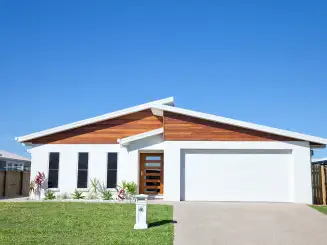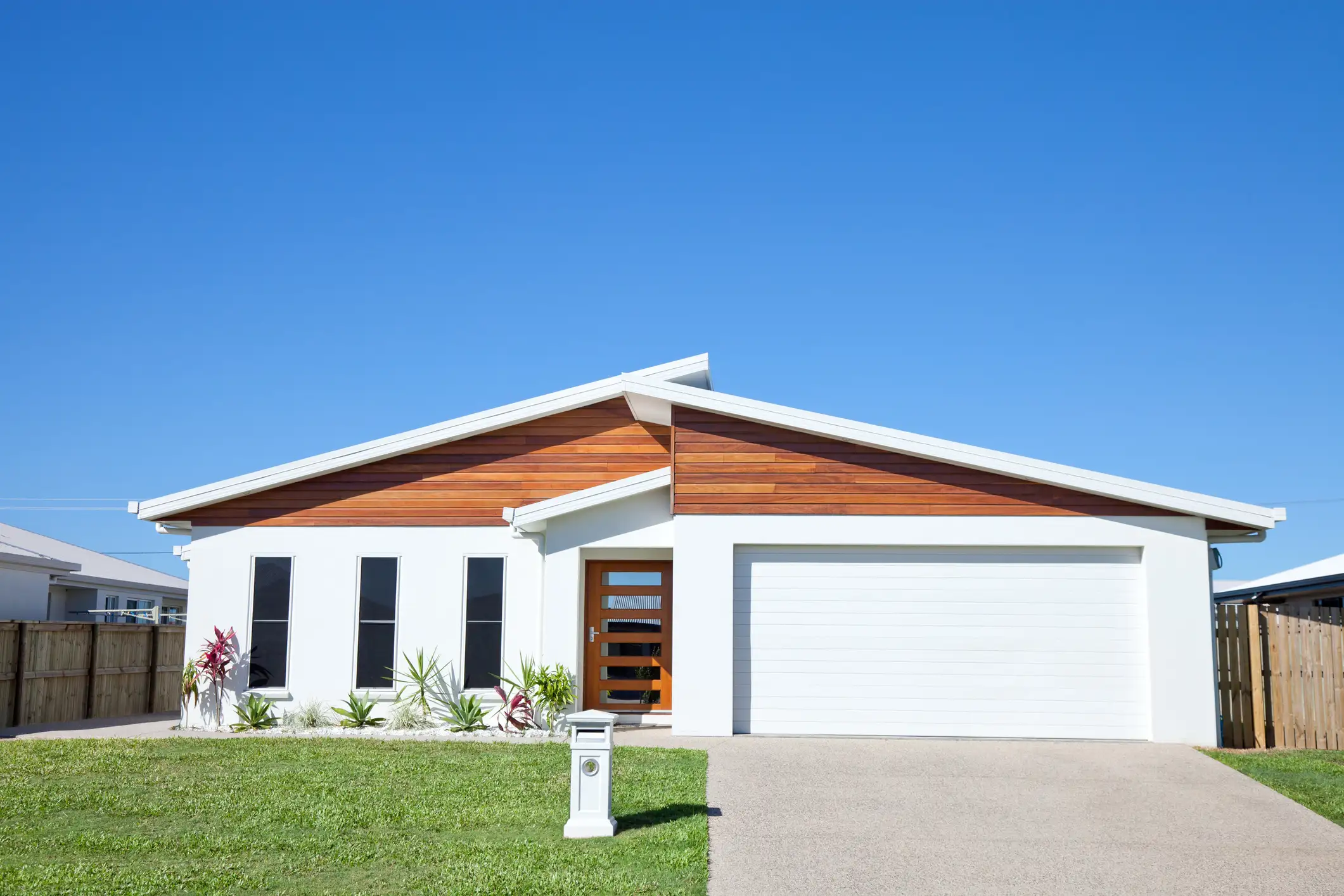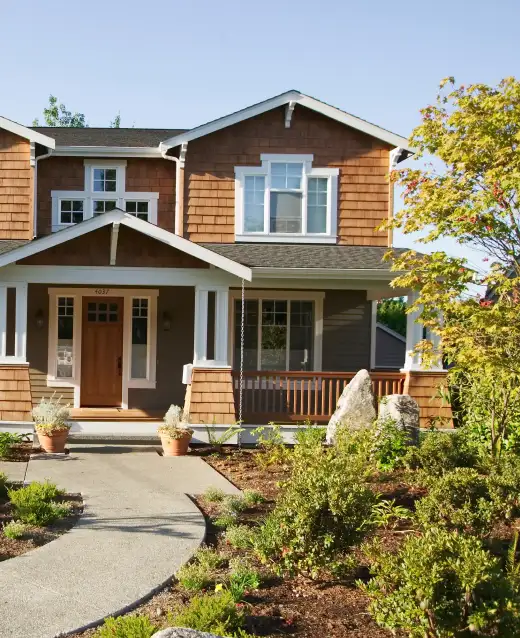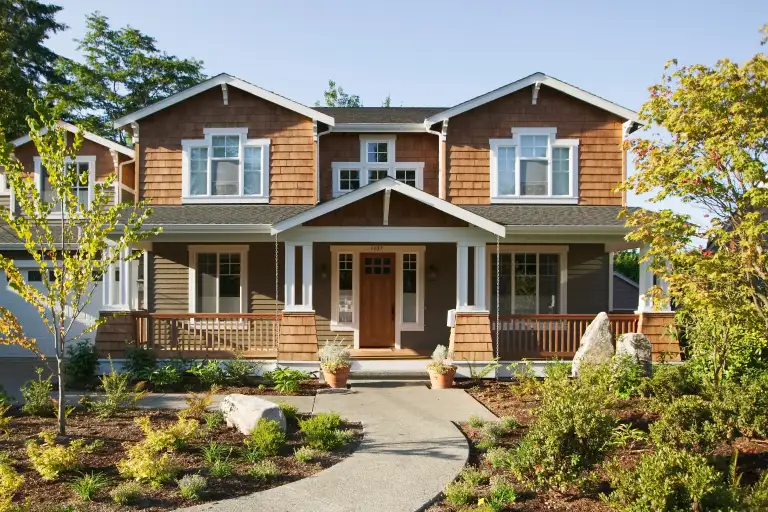Conventional loans
Welcome to the most popular home loan option, a common route for buyers or refinancers with solid credit. A conventional loan is not backed directly by the government, but is supported by government-sponsored entities (GSEs) like Fannie Mae and Freddie Mac. These GSEs are responsible for keeping the mortgage market healthy and stable, so banks can offer more loans and people can afford to buy homes.
Who qualifies for a conventional loan?
- Credit score of at least 620
- 3––20% down payment saved up
- Low debt-to-income ratio (often 36% or lower)


Conventional Loans vs. Government-backed loans
Government-backed loans are insured by government agencies, meaning agencies foot the bill if a borrower defaults. Conventional loans are supported by government-sponsored entities but aren’t government-insured, so lenders have stricter loan qualification requirements to minimize risk.
Pros and cons of conventional loans
| Pros | Cons |
|---|---|
| Can be used to finance a wide range of properties | Stricter requirements for credit scores and financial stability |
| Private mortgage insurance not required with down payment of 20% or more | Private mortgage insurance typically required if down payment is under 20% |
| Offers generally lower interest rates to buyers with good credit |
FHA loans
Ready to dig into government-backed types of mortgage loans? First, let’s start with home loan options for low-income buyers and those with imperfect credit. A Federal Housing Administration (FHA) loan is a great solution for those who don’t have sterling silver credit or much cash handy for a down payment. In fact, it’s considered one of the best mortgage loans for first-time buyers—though you don’t need to be a first-timer to qualify for one. If you nail down an FHA loan, you’ll get interest rates comparable to those of conventional loans. Keep in mind that there are a few strings attached, such as limits and required fees.
Pro TIp
You might know that first-time homeowners have access to special programs and loan terms. But did you know that some former homeowners can apply as first-timers? As long as you haven’t owned a home in the last three years, you may qualify for first-time buyer programs and land more favorable terms.
FHA loan requirements
- Credit score of at least 500 (varies by lender)
- Down payment as low as 3.5%
- More lenient debt-to-income ratio (often capped at 43%)
- Required upfront & annual fee instead of PMI
FHA vs. conventional loans
| Feature | FHA Loan | Conventional Loan |
|---|---|---|
| Credit Score | 580+ (sometimes 500+) | 620+ |
| Down Payment | 3.5%-10% | 3%-20% |
| PMI Requirements | Guarantee & annual fee instead of PMI | Mandatory if down payment is less than 20% |
| Best For | First-time buyers, lower credit scores | Buyers with strong credit and higher income |
VA loans
The U.S. Department of Veterans Affairs (VA) gives military folks an extra hand with mortgage. Military veterans, active-duty service members and surviving spouses can buy or refinance a home with a VA loan for flexible requirements and generous loan terms.
Benefits of VA loans
- Low interest rates compared to conventional loans
- Zero down payment required
- No limit on amount you can borrow
VA loan eligibility
- Certificate of Eligibility (COE) to verify military service
- Credit score of 620+ typically required
- Debt-to-income ratio of 41% or less preferred
- For primary residences only
USDA loans
If you’re on the hunt for a quaint little spot in the country or the suburbs, the U.S. Department of Agriculture (USDA) may help you sort the wheat from the chaff of home loans. USDA loans offer up great benefits for rural residents: no down payment, low interest rates and affordable insurance costs.
USDA loan requirements
- Credit score of 640+ often required
- Debt-to-income ratio of 41% or less preferred
- Household income can’t exceed 115% of regional median income
- Upfront guarantee fee & annual fee instead of private mortgage insurance
USDA loan vs. FHA loan
| Feature | USDA Loan | FHA Loan |
|---|---|---|
| Down Payment | 0% | 3.5% |
| Credit Score | 640+ preferred | 580+ (sometimes 500+) |
| PMI Required? | Guarantee & annual fee instead of PMI | Guarantee & annual fee instead of PMI |
Jumbo loans
Jumbo loans (aka non-conforming loans) are what they sound like: bigger loans for bigger price tags. Jumbo loans let you borrow more than the standard or “conforming” loan limits set by the Federal Housing Finance Agency (FHFA). You can finance a primary home, secondary home, vacation home or an investment property, but you’ll be up against strict financial requirements and sometimes higher interest rates because jumbo loans pose a greater risk to lenders.
When do you need a jumbo loan?
- Buying a high-cost or luxury property
- Borrowing more than conforming loan limits
- Financing properties not eligible for conventional loans
Qualification for a jumbo loan
- Minimum credit score of 700
- Debt-to-income ratio of 43% or less preferred
- Private mortgage insurance may or may not be required
- Proof of consistent income in recent years
Adjustable-rate mortgages (ARMs)
Not only are there different types of mortgages, but there are also different types of interest rates. When you have an adjustable-rate mortgage, your interest rate fluctuates over the loan’s duration. Initially, the rate is fixed for a set period, typically 3 to 10 years. After that period, your interest rate can rise or fall based on market conditions, causing your mortgage bill to change with it. Adjustable-rate mortgages are appealing if you want to take advantage of the initial low-rate period and plan to sell or refinance soon.
How ARMs work
Once the initial rate period is over, why do rates change? Two factors are at play here: the index and the margin. The index is the baseline interest rate, which is influenced by broader economic conditions. The margin is outlined in your loan agreement and dictates just how much your rate can fluctuate over the life of the loan. Together, these two factors dictate your rate adjustment. Keep in mind that the unpredictability of adjustable rates can make it challenging to plan your mortgage budget.
ARMs vs. fixed-rate mortgages
| Feature | ARM | Fixed-Rate |
|---|---|---|
| Initial Interest Rate | Lower | Higher |
| Payment Stability | Changes over time | Stays the same |
| Best For | Short-term homeowners | Long-term homeowners |
Fixed-rate mortgages
Fixed-rate mortgages, the more grounded sibling of the adjustable-rate mortgage, lock you into one constant interest rate during a loan. That means steady, predictable payments and no unwelcome surprises on your mortgage bill.
Benefits of fixed-rate mortgages
- Predictable payments
- Protection from interest rate spikes
- Ability to accurately budget for mortgage payments
15-year vs. 30-year fixed loans
Most people choose a 15-year fixed or 30-year fixed loan, depending on their financial situation. If you can afford higher monthly payments, a 15-year fixed mortgage will cost you less in total interest over time. If you’re juggling several debts (hello, car payments and student loans), a 30-year fixed term can reduce financial pressure in the short term.
| Feature | 15-Year | 30-Year |
|---|---|---|
| Monthly Payment | Higher | Lower |
| Total Interest Paid | Less | More |
| Loan Payoff Time | Shorter | Longer |
Home equity line of credit (HELOC)
If you’re a current homeowner in need of cash flow, a HELOC could be a safe bet. A HELOC is a revolving credit line (much like a credit card) that lets you borrow against your home equity for whatever you need. HELOCs usually have lower interest rates because lenders shoulder less risk when your home is collateral.
HELOC vs. home equity loan
| Feature | HELOC | Home Equity Loan |
|---|---|---|
| Payout | Revolving credit line | Lump Sum |
| Interest Rate | Variable | Fixed |
| Best For | Ongoing expenses | One-time expenses |
Best uses for a HELOC
- Renovations that may increase your home value
- Consolidation of debts that have higher interest rates
- Ongoing access to funds for big projects or emergencies







